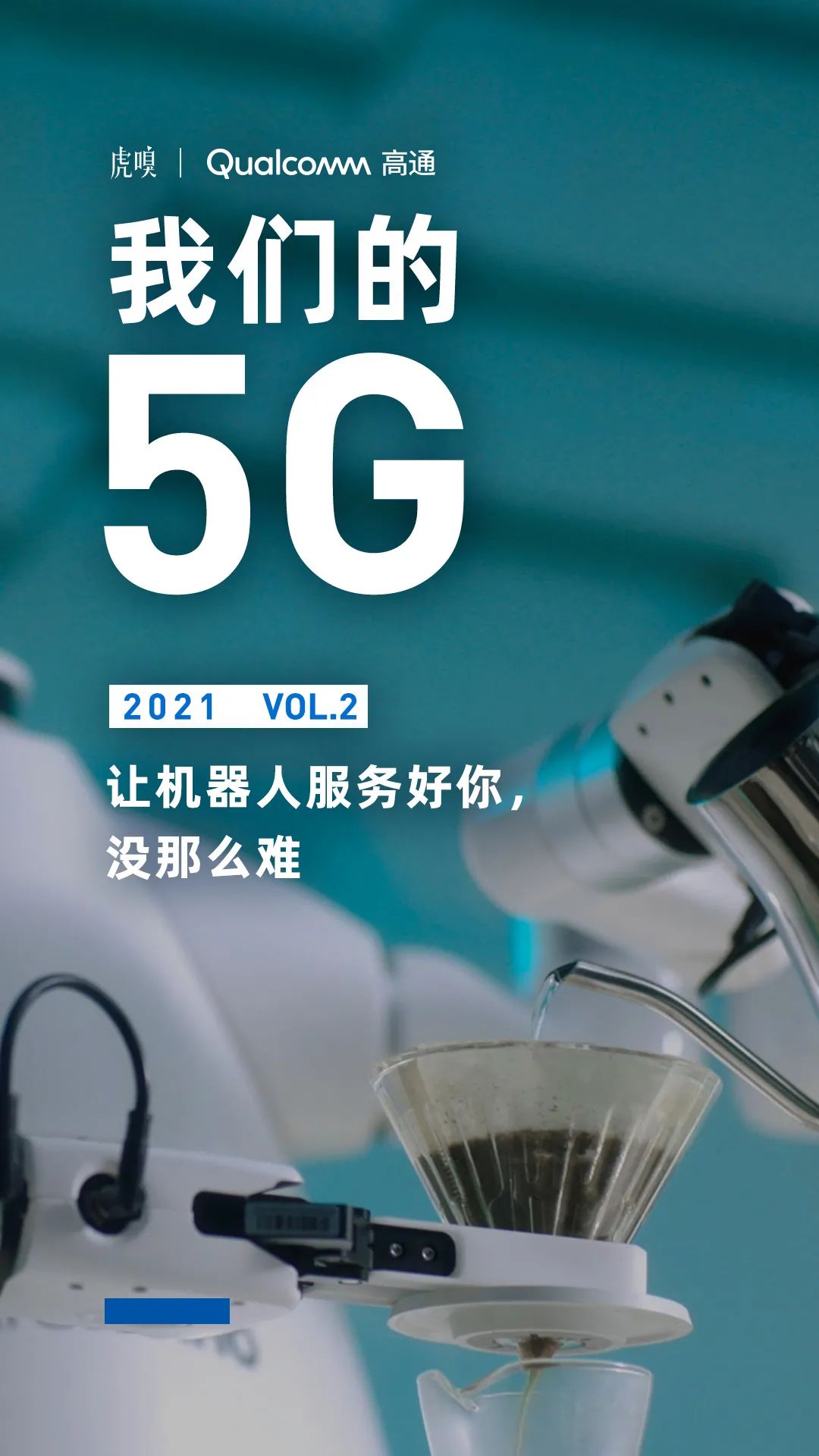
“Our 5G” is a series of reports jointly created by Tiger Sniff and Qualcomm, aimed at focusing on the development dynamics of the 5G industry, as well as how the people, companies, and industries behind it work together to achieve the link from technology foundation to daily application of 5G, outlining each participant’s thoughts on 5G and demonstrating the value of 5G to everything.

Introduction
At the end of 2016, Zuckerberg posted a video to showcase how robots transformed his life, demonstrating his home robot AI system. He controlled the entire home system through custom software and named this butler Jarvis, just like the one in Iron Man, for which Zuckerberg wrote the code himself. Jarvis could control electrical switches, play music according to preferences, toast bread on a schedule, and even recognize visitors at the door.
For an average person five years ago, having such a service robot seemed a bit far-fetched. But today, it’s not hard to see that service robots have begun to appear in various aspects of our public lives, addressing ordinary needs such as reception, guidance, meal delivery, and logistics.
A more intuitive figure is that according to the “China Robot Industry Development Report (2019)”, the service robot market in China grew by about 33.1% year-on-year in 2019, surpassing the global service robot market growth rate. Compared to other industries, it also showed a higher growth rate.
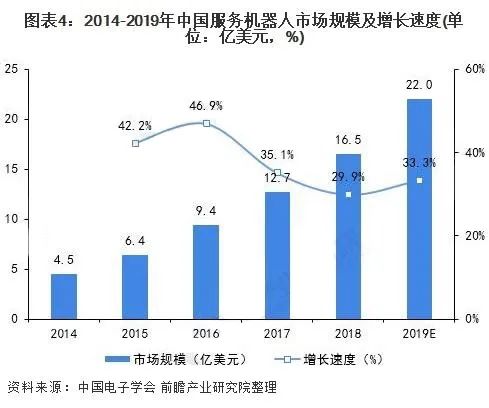
Meanwhile, propelled by the pandemic, more robots for temperature measurement, disinfection, and delivery have come into service, taking on significant tasks. At Huoshenshan Hospital, there are also two delivery robots donated by Orion Star that can handle the delivery of medicines and equipment in the wards.
The rise of service robots is not just a simple reflection of science fiction in reality; it is also a transformative path explored by China amid the wave of urbanization.
The Dilemma of Urban Labor Force
After the reform and opening up, the rapid development of the service industry came alongside urbanization. According to the National Bureau of Statistics’ “China Statistical Yearbook” data from 1978 to 2019, as the urban population increased, the service industry in China also showed a trend of coordinated growth. To this day, as a direct industry fulfilling residents’ living and spiritual needs, the service industry has become the largest engine driving economic growth in China.
The vast market scale has brought more convenience to our urban lives, and naturally, there is a similarly huge demand for labor. According to the National Bureau of Statistics’ 2019 report on the achievements of China’s economic and social development in the 70 years since the founding of New China, by the end of 2018, the proportion of employment in the service industry reached 46.3%, becoming the industry that absorbs the most employment in China.
Looking back at today, in contrast to the strong demand in the service industry, is the gradual inability of the young workforce engaged in traditional service industries to meet market needs against the backdrop of aging.
First, due to the impact of the birth rate, from 2015 to 2019, the population of suitable labor aged 16-59 in China showed a downward trend. Secondly, traditional service industries have weak competitiveness in terms of wages and working conditions. According to the “2020 Migrant Worker Monitoring Survey Report”, the average monthly income of migrant workers in the “accommodation and catering” and “residential service, repair, and other service industries” was 3,358 yuan and 3,387 yuan, respectively, lower than the average for migrant workers and maintaining a low growth rate.
Beyond the data, as the barriers to obtaining information continue to lower, these young people who have grown up with the internet are no longer subjectively satisfied with following in their parents’ footsteps to do basic service work.

Generational change is just one aspect; another is that the rapid urbanization process brought about by the large population base has led the traditional service industry to form a long-term dependence on low-cost labor resources. This has neglected the upgrading of personnel quality in the service industry, causing slow progress in experience and format within the industry, resulting in the seemingly contradictory social phenomena of “loss of young rural labor and becoming hollow villages” and “difficulty in recruiting in cities”.
As the demographic dividend gradually shrinks, the issue of urban employment will become more apparent in the future. The rise in service demand forces the service industry to raise the salaries of service personnel, inevitably leading to an increase in operating costs, which, when passed on to consumers, results in visibly higher living costs.
How to solve this unbalanced social issue? People have pinned their hopes on the rapidly changing intelligent robots.
What Makes It Difficult for Robots to Serve You Well?
In fact, as early as 2016, the Ministry of Industry and Information Technology, the National Development and Reform Commission, and the Ministry of Finance jointly issued the “Robot Industry Development Plan (2016-2020)”, which clearly identified “service robots” as one of the future development directions of the service industry.
From this perspective, in a situation where a significant breakthrough in the labor population is difficult in the short term, replacing humans with service robots for basic services has become an effective means to enhance the competitiveness of urban service industries, reduce residents’ living costs, and further improve the urbanization rate of the country.
Although the direction forward is clear, making robots intelligent enough is still not easy for companies.
“The most challenging thing is that no one can tell you how to do it.”
Orion Star is a representative company in the domestic service robot industry. Its Senior Vice President Tong Ning believes that the development of IT technology in China in the past can largely refer to and follow Western developed countries. However, in the field of service robots, it is almost a completely undeveloped wasteland. This has led to Orion Star spending a lot of time in the early stages solving those “basic problems”.
“We initially used a mobile phone chip for this. But we found that to achieve the AI functions of a robot’s vision, audio, navigation, etc., high computing power is required, and ordinary mobile phone chips cannot support this. Therefore, we set up three or four chips in different locations, each function having its own mainboard, and each board running its own logic system.” Just to maintain the stability of basic computing power, the entire robot system has become extremely complex, and the costs are not low.
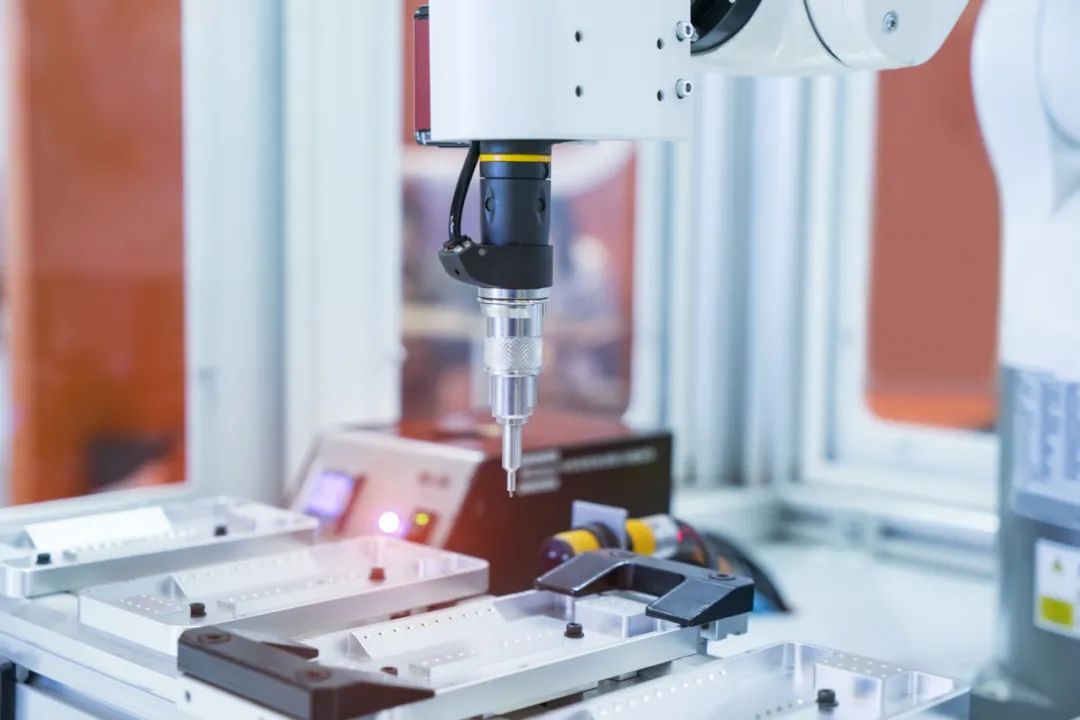
The complex application scenarios of service robots inevitably require frequent interaction with humans. Whether it is avoiding walking pedestrians, communicating with customers, or accurately delivering meals to tables, all these demand higher requirements for algorithms in vision, navigation, and more; from the consumer’s perspective, the robot’s response speed and accuracy, as well as other subtle deviations, can significantly affect user experience.
In contrast, robots in industrial manufacturing are primarily designed for automation, focusing solely on doing one thing best. This allows developers to concentrate more on improving precision rather than dealing with various random scenarios.
To enable robots to achieve optimal interaction with humans, high-precision sensors, AI algorithms, hardware computing power, and stable network transmission capabilities are all indispensable.
|
1 |
|
|
2 |
|
|
3 |
|
The absence of these three aspects has quickly exposed the shortcomings of the robot industry’s supply chain.
Taking sensors as an example, at that time, there were only one or two companies in the world making robot laser radars, and the cost of importing components to China was over ten thousand. Imagine if a robot’s cost is too high, no one would be able to afford it. “At that time, we found a manufacturer of laser rangefinders, and through technical cooperation, we reduced the cost of foreign sensors from over ten thousand to 500 yuan.” If there are components missing in the supply chain, Orion Star develops them together with suppliers.
Next, as the “soul” of the entire robot, the issue of AI algorithms is equally evident. For example, voice recognition has become relatively mature in China, but there are still very few technologies capable of accurate recognition in noisy public environments. If the robot cannot understand what people are saying, it cannot provide accurate feedback. What is missing here is a noise reduction algorithm suitable for public occasions.
“This is also why two robots with the same hardware, once separated, still have significant differences in actual use.” Tong Ning believes thatthe deep matching of AI algorithms to application scenarios is the core competitiveness of future service robot companies, which is why Orion Star has invested much effort in algorithms.
Finally, as the hardware carrier and communication support of the entire robot system, computing power and networks require more mature and stable platform support.
As mentioned earlier, to accommodate the entire AI system, Orion Star had to disperse computing power across various mainboards, which not only extended the development cycle but also required more effort to debug the system’s stability. Ultimately, it is challenging to achieve an economic balance among computing power, power consumption, network communication, and other functions, making it hard to avoid “reinventing the wheel” when developing new robots.
Having a stable and reliable computing power and network solution has become the last wall in front of Orion Star.
New Ecology, New Solutions
In the process of mutual integration of new technologies, a new ecology is also forming.
The issues faced by Orion Star are essentially common problems in the service robot industry. As service robots become a foundational service for society, many problems cannot be expected to be solved solely by one company, but rather rely on mutual empowerment and joint construction of ecosystems by different specialized enterprises. In other words, ecosystem-level challenges require more comprehensive solutions.
During the rapid development of communication and mobile chips, Qualcomm has not only become a leader across multiple foundational technology fields but has also accumulated profound experience in mobile communication, high-performance computing, and other areas.In the process of cooperation with Orion Star, the Orion Star robot system using the Qualcomm Snapdragon 845 mobile platform has finally been able to break through the limitations of computing power, fully unleashing the imagination of service robots entering consumers’ future lives.
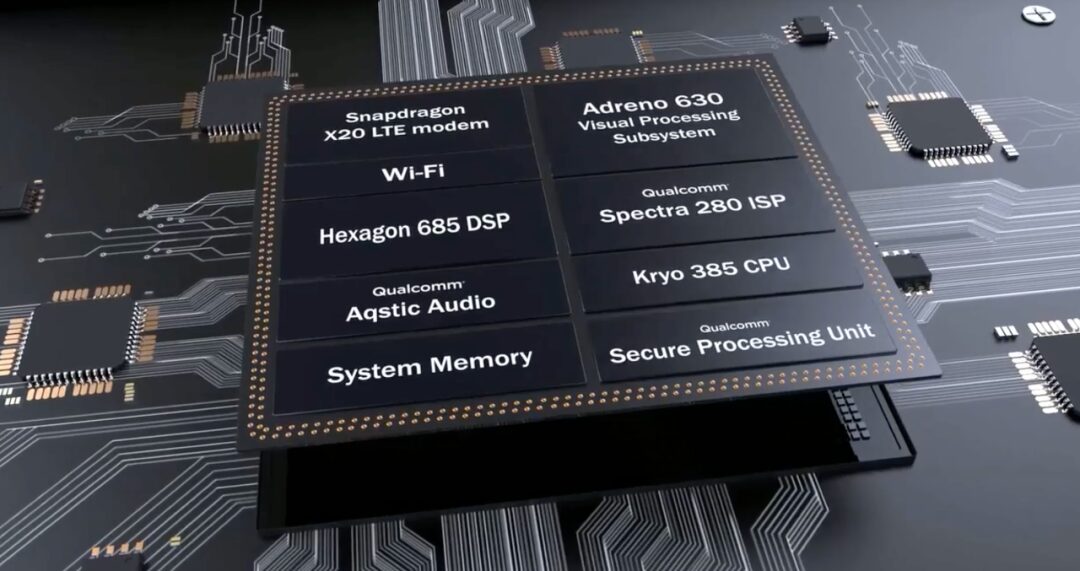
“The most important thing about robot chips is ‘stability’. For example, if we developed a Windows program and wanted to port it to an Android system, we would need to invest a lot of R&D resources again,” Tong Ning explained:
Qualcomm provides us with a mature robot chip solution: high computing power, low power consumption, along with communication capabilities and corresponding protocol support, while this platform will be stable for the next three to five years.
By integrating high-performance heterogeneous computing, AI engines, computer vision, hardware security, multimedia, and Wi-Fi, not only does it provide higher computing power for the robot system, but it also proposes a complete system-level foundational solution around the robot’s complex interaction system.
If a robot product is a house, then it can be said that Qualcomm has laid the most important foundation, connected the utilities, and provided the necessary supporting facilities, enabling it to have strong foundational software and hardware conditions. Robot companies can focus on refining the “soul” of the robot—AI algorithms. Lowering costs and improving efficiency ultimately provide consumers with a better experience in various scenarios.
This is not just about reducing the development costs of a single robot. Over time, when Qualcomm’s next-generation platform is launched, it will still ensure compatibility with the previous generation. In this way, the entire platform will have a more stable pace of technological updates, and commercially, there will be stable investments and returns. As business uncertainties decrease, the entire ecosystem will become more stable and sustainable.
In addition to the comprehensive support of the Snapdragon 845 mobile platform for the robot’s computing power, Qualcomm’s mature and leading 5G communication technology also helps robots better connect to the network and interact with the Internet of Things.
For example: “Smart Coffee Master” is a six-axis dual-arm beverage robot independently developed by Orion Star. Unlike other automated coffee-making devices, Smart Coffee Master can simulate the actual hand-brewed coffee process. The entire process can be accurate to a reset error of 0.1mm, capable of serving 1,000 portions per day, achieving three times the productivity of an ordinary barista; combined with reliable low-latency 5G networks, Smart Coffee Master can achieve a more intelligent retail scenario, ensuring beverage quality while minimizing dependence on manual labor.
In fact, the popularization of 5G is bringing a broader application market for service robots. For robots equipped with interaction, delivery, remote embodiment, cloud services, and big data capabilities, the combination of 5G’s high reliability, high bandwidth, and low latency will further unleash the potential of robots. The so-called “robot system” will not only be limited to hardware devices in front of consumers but will also expand to the cloud, achieving comprehensive expansion of functions and experiences.
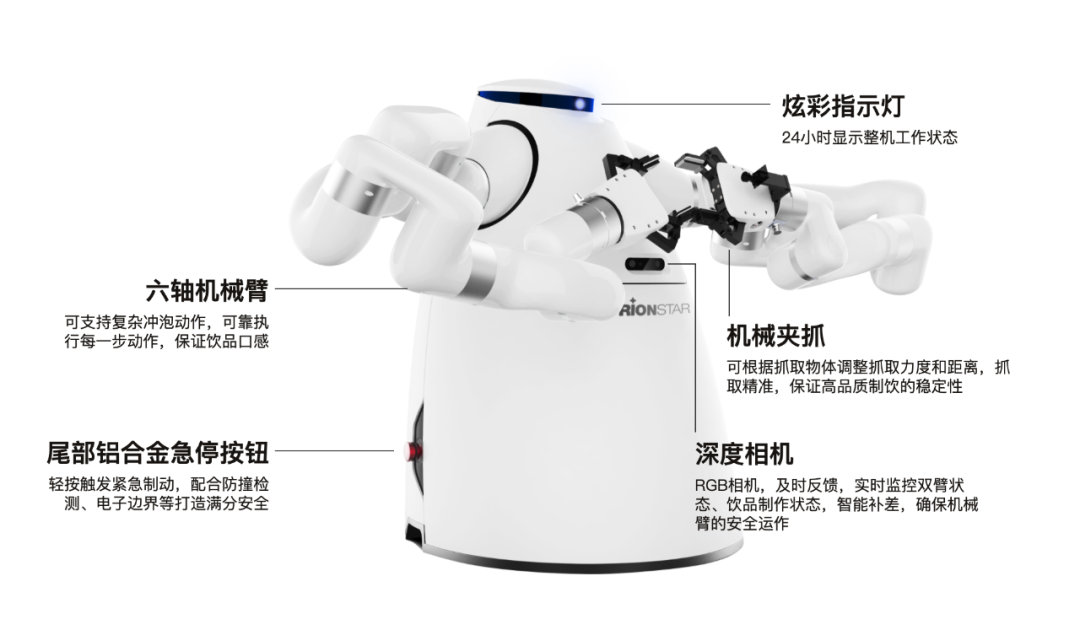
“Qualcomm also provided us with some core semiconductor design and manufacturing teams and partners, which allowed us to take fewer detours in the motherboard design process, improve product quality, and achieve significant cost advantages.”
Now, under the gradually forming intelligent robot ecology, Qualcomm can already provide partners with stable and comprehensive system-level solutions. These deep supports are quietly transforming into mature products under companies like Orion Star and continuously entering our lives.
5G Changes Life
“In the future, robots will evolve towards markets like ‘AI + IoT’. We believe that in this field, in addition to robots, there will be various intelligent devices that require AI computing power, with numerous application scenarios and significant growth potential. This will be a market that surpasses the smartphone industry in the future.” Tong Ning provided a full outlook on the future applications of robots.
Against the backdrop of rapid growth in the service industry, AI devices like service robots that can reduce labor costs also have a broader market space. Currently, as the largest service robot company, Orion Star has already landed in over 20 industry scenarios. As of the end of February 2021, over 18,890 robot employees were on duty, serving over 2,500 customers, with an average daily voice interaction frequency exceeding 9.22 million times, and total service interactions exceeding 210 million times.
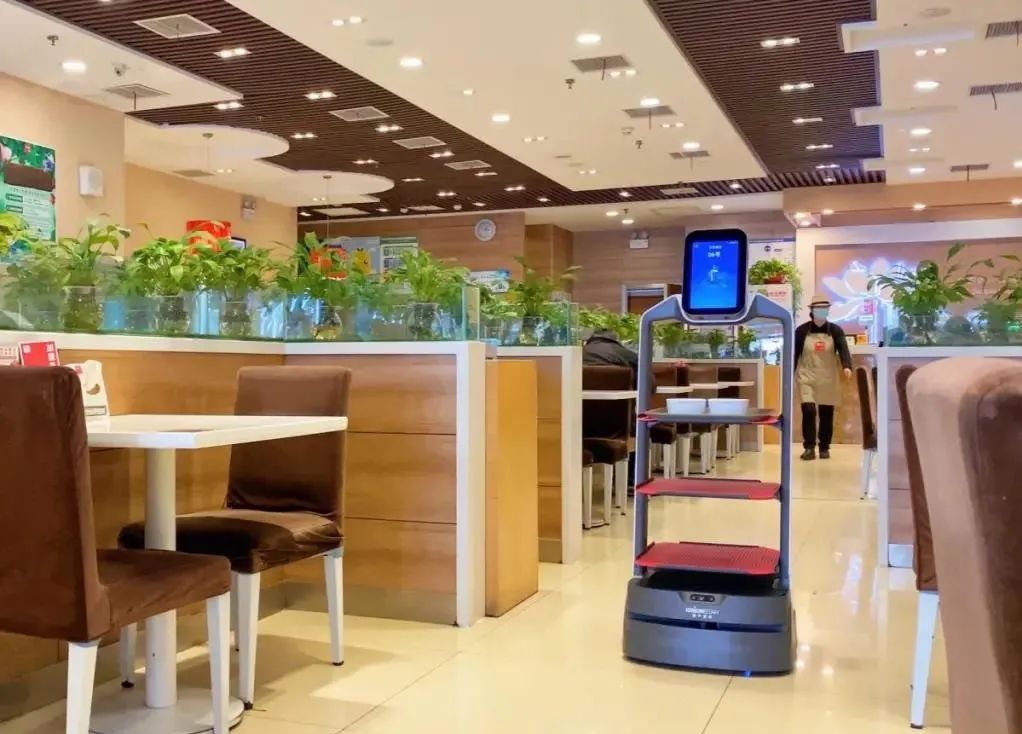
China is a populous country. Over the years, the rapid development of labor-intensive industries has led to more residents concentrating in urban areas, which has also caused different industries, including the service industry, to form a dependence on low-end labor. Only by liberating more labor from basic work to engage in higher-value work can these industries have the opportunity to undergo an efficiency upgrade.
This is why the “intelligent transformation” has been repeatedly mentioned in recent years, and the fundamental reason why the infrastructure reforms led by “5G + IoT” can be widely discussed.
In this process, many foundational technology companies are providing technical support, empowerment, and assistance to various industries, driving the integration of technologies such as 5G, intelligent robots, AI, and big data, and promoting a new round of production evolution in the service, industrial, and agricultural sectors.
As the underlying software and hardware technologies of products like service robots gradually improve, and more application products empower various industries, achieving cost reduction and efficiency enhancement, our lives will also break the boundaries of imagination, making intelligence no longer distant.

At the upcoming May 21-22 event themed “Connecting a Beautiful Future Together” at the 2021 Qualcomm Technology and Cooperation Summit, we may see more possibilities for intelligent machines empowered by 5G and AI in daily life. Whether it is a ping pong robot capable of precise serves, a 5G car using vehicle networking and digital cockpit technology, or an agricultural drone capable of efficient fertilizer spraying… covering smart agriculture, smart transportation, smart cities, smart homes, and other fields, the technological products are changing the familiar world just like Orion Star’s service robots.
Our 5G · Special Planning

Previous Reviews
How hard do they work to make your viewing experience enjoyable?
